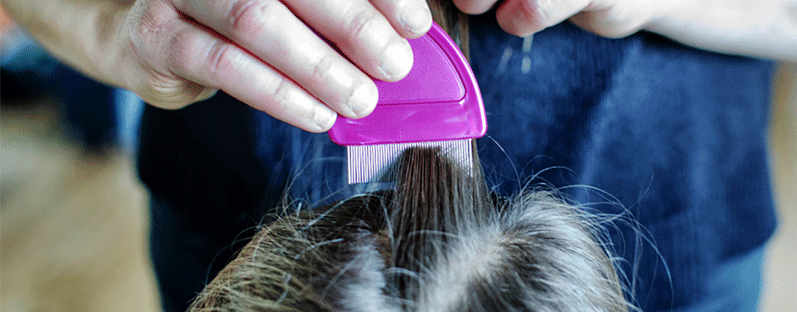The day a child first leaves for school is potentially the most emotional day of a parent's life. You'll soon realise though, that your little ones are fine once they start making friends of their own; they'll invite these new friends over after school and you'll wonder why you were ever worried about them.
However, we're more concerned about the uninvited guests they could be bringing home. What do you do when your little monsters bring home some little monsters of their own?
That's right, it's time to talk about head lice.
Children will more than likely catch a number of relatively harmless school illnesses over the years, but it's important to remember that head lice aren't a health concern. We do understand why these creepy crawlies might make your skin crawl, but head lice are very common amongst children, with the NHS estimating that one in three children in the UK will get head lice at some point in the year. The good news is that head lice can be treated with a bit of persistence. If you're currently scratching your head trying to find a solution for head lice, then let us help.
What are head lice and how has my child caught them?
Head lice are small insects that live in the hair and feed off the scalp. Lice reach adulthood at 7-10 days, and at this point the lice will lay eggs that will quickly hatch into dozens of new lice. This cycle will repeat itself constantly until the lice are treated.
Contrary to common belief, lice cannot fly or jump from head to head and you can't catch them from sharing hats or pillows. The only way to catch head lice is through head to head contact with somebody who already has them. The main thing to remember is that head lice will make any head a home; it is not an issue of hygiene or health.
What are the symptoms of head lice?
The most common and noticeable symptom of head lice is itching. The itching is a result of an allergy to the louse faeces and saliva, so you may notice your child scratching their head quite a lot. Head lice are so common that it is worth checking your child's hair if you do think that they're scratching quite frequently.
You can check for lice by using a special head lice comb. The most common thing to see would be nits. Nits aren't the creature themselves but the empty egg shells left behind when a louse hatches. They look like dandruff but can't be combed or washed out with ordinary shampoo. However, the sighting of nits alone isn't enough to diagnose an active louse infestation. This is because nits are hard to get rid of, so what you're seeing could be remnants of a previous infestation. To confirm an active head lice infestation, you need to see a living louse in your child's hair.
How can I treat head lice?

There are only a few ways to successfully treat head lice. You can wet comb your child's hair with a special head lice comb. The teeth on these combs are designed to trap and crush the lice.
You can wet comb your child's hair without the need to use specialist lotions or sprays, but it's a time consuming method and must be repeated regularly and thoroughly. The method for wet combing hair is as follows:
- Wash the hair with ordinary shampoo before apply plenty of conditioner
- Detangle the hair by combing as normal
- Drag the louse detection comb through the hair from the root to its tips
- Check the comb for lice after every stroke
- Rinse or wipe the comb before moving on to the next section of hair
- Continue to repeat these steps until the entire head has been combed
- Rinse out the conditioner and repeat the combing process once more
This will count as day one in the procedure, you will need to repeat this process on days three, six, nine, twelve and fifteen in order to get rid of any newly hatched lice.
The most effective way to treat head lice is to use specialist lotions and sprays available from pharmacies. Speak to your pharmacist who will be able to recommend an over-the-counter lotion or spray and provide you with the best advice on how to use it effectively.
These specialist products should only be used if you have confirmed an infestation by seeing a living louse. It's always worth ensuring that you buy enough product to treat everyone in your family that is affected, and take into account whether you will need more than one bottle for extra thick or long hair.
Different formulas come with different instructions so always read the instructions carefully. You may have to leave the product on for just 10 minutes or it could even be 8 hours, you will normally have to repeat the process again in 7 days to ensure any newly hatched lice are also gone. The normal advice is to treat the hair and repeat the treatment after seven days. These two applications of lotion are essential because the products don't always kill louse eggs, and it will only take a couple of lice to start the horrible process all over again.
If these methods fail to work, you'll need to seek further advice from your pharmacist or GP.